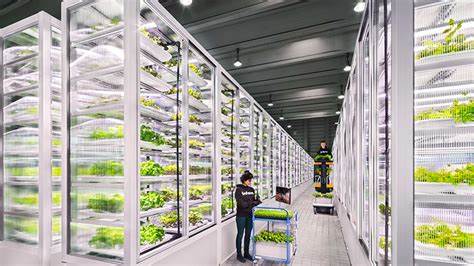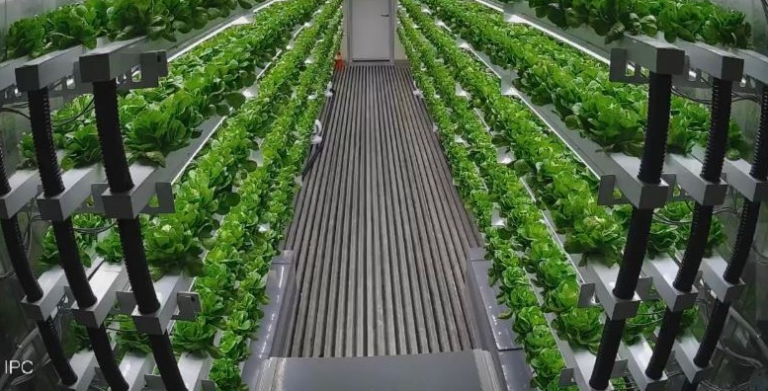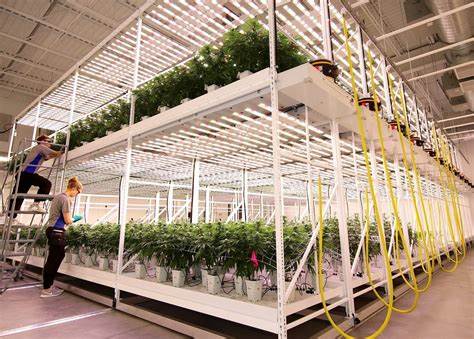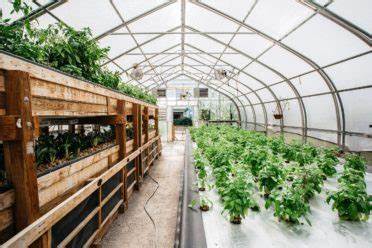
Vertical Farming: Choosing the Right System for Success and Sustainability
Introduction
Vertical farming has emerged as a revolutionary concept in modern agriculture, offering a solution to the challenges of limited land availability and increasing food demand. In this article, we will explore the concept of vertical farming and its importance in today’s agricultural practices. Additionally, we will delve into the significance of selecting the right vertical farming system for successful and sustainable operations.
Historical Background
Vertical farming dates back to the early 20th century when the concept of utilizing multilevel structures for crop cultivation was first introduced. However, it is in recent years that vertical farming has gained significant traction due to advancements in technology and the need for more efficient and sustainable agricultural practices. Milestones in vertical farming include the incorporation of hydroponics and aeroponics systems, which have revolutionized the way plants are grown.
Key Concepts and Definitions
Vertical farming can be defined as the practice of cultivating plants indoors in stacked layers or vertically inclined surfaces, allowing for optimal space utilization. This method often utilizes hydroponics, aeroponics, or aquaponics systems, which eliminate the need for soil and rely on nutrient-rich water or mist for plant growth. Lighting, irrigation, and plant selection are crucial components of vertical farming systems, as they directly impact crop yield and quality.
Main Discussion Points
Types of Vertical Farming Systems
Vertical farming systems can be categorized into stackable systems, tower systems, and wall-mounted systems. Each system type has its advantages and disadvantages. For example, stackable systems are cost-effective and suitable for small-scale operations, while tower systems allow for larger crop volumes. Successful implementations of these systems can be seen in vertical farms such as AeroFarms and Plenty.

Factors to Consider in Choosing a Vertical Farming System
Several factors must be considered when selecting a vertical farming system. Space availability is a critical consideration as it determines the scale of operations. Climate conditions, such as temperature and humidity, also play a vital role in determining the suitability of a system. Desired crop selection is another factor, as different crops have varying requirements. Additionally, cost, scalability, and resource efficiency are important considerations. Evaluating and selecting the right vertical farming system requires careful analysis of these factors.
Technology and Equipment
Technology integration is a key aspect of successful vertical farming systems. Automated controls, sensors, and monitoring systems enable precise control over environmental factors, ensuring optimal plant growth. The selection of appropriate equipment, such as grow lights, irrigation systems, and climate control systems, is crucial for maintaining ideal growing conditions. Cutting-edge technologies, such as AI-based crop monitoring and robotic systems, are being increasingly adopted in vertical farming to enhance productivity and efficiency.
Case Studies or Examples
Real-world examples of successful vertical farming systems showcase the potential of this approach. Gotham Greens, a leading urban agriculture company, has implemented vertical farming across several locations, providing fresh produce to local communities. Plenty’s vertical farms utilize advanced technology and data analytics to achieve high crop yields. These case studies highlight the advantages of vertical farming, including reduced water usage, minimized transportation costs, and year-round production.

Current Trends or Developments
The integration of artificial intelligence and machine learning in vertical farming is a significant trend. AI-powered systems can analyze plant data and optimize growing conditions, leading to higher crop yields. Recent research findings and technological advancements have further contributed to the growth of vertical farming. Additionally, the adoption of vertical farming in urban areas has the potential to address issues of food security and sustainability, as it reduces reliance on long-distance transportation and promotes local food production.
Challenges or Controversies
Choosing the right vertical farming system is not without its challenges. High initial investment costs pose a barrier to entry for many farmers. Additionally, vertical farming systems consume significant amounts of energy, raising concerns about their overall sustainability. Environmental impact is also a topic of debate, as critics argue that the energy required for artificial lighting and climate control may outweigh the benefits. However, these challenges can be mitigated through the use of renewable energy sources, energy-efficient technologies, and continuous research and development.

Future Outlook
Vertical farming holds immense potential for revolutionizing global food production. As technology continues to advance, we can expect further improvements in crop yields and resource efficiency. Emerging trends such as multi-layered farming and the utilization of vertical space in urban planning offer exciting possibilities. Vertical farming also has the potential to reshape the way food is distributed, reducing transportation distances and ensuring fresh produce reaches consumers more efficiently.
Conclusion
Choosing the right vertical farming system is crucial for the success and sustainability of operations. By considering factors such as system type, space availability, climate conditions, and desired crops, farmers can make informed decisions. The benefits of vertical farming, including increased crop yields, reduced water usage, and minimized environmental impact, make it a promising solution for the future of agriculture. Continued research and development in the field will further enhance the potential of vertical farming in addressing global food challenges.




